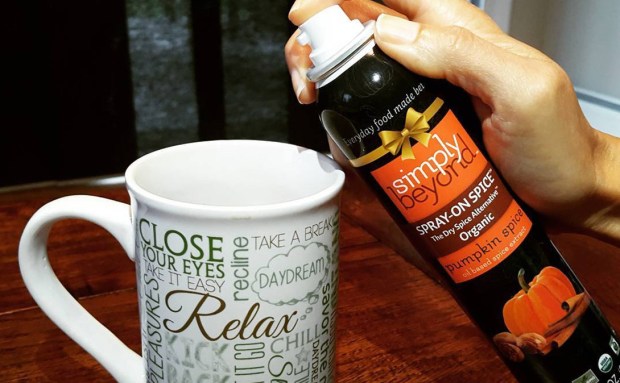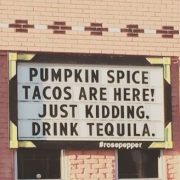Pumpkin Spice Simply Beyond Its Normal Limits

Fall has almost arrived (tune in tomorrow for the official autumnal equinox), which means the season for jeans, sweaters, football and early Christmas shopping for the disgustingly well-prepared is upon us.
And, of course, pumpkin spice season is here. Pumpkin spice is not a new flavor — it was first referenced by The Washington Post in 1936 — and pumpkin pie spice blends have been marketed and sold since the 1950s.
But in 2003, Starbucks paved the way with its pumpkin spice latte. Since then, pumpkin spice has become a non-optional part of the fall season. It has also extended well past coffee flavors.
Room sprays, desserts, protein powder, chips (both potato and tortilla), gum, burritos, roasted garbanzo beans — we could go on for a while with this one, but chances are if you’ve been living in this country for the last 15 years or so, you are well-versed in the numerous pumpkin spice varieties out there. It is impossible to venture very far into any retailer or restaurant these days without someone offering you a pumpkin spice something.
This, of course, has caused the inevitable annual backlash from consumers — possibly those who have been offered a pumpkin spice burrito. The complaint: Just because you can make something taste like pumpkin spice, does not necessarily mean you should make it taste like pumpkin and/or spice. At which point the memes begin — and, truly, we can’t recommend Googling “anti-pumpkin spice memes” enough. We put our favorite (clean) one below:

And yet the sales figures — and ever-proliferating variety of products — belie the hostility in those memes. For reasons somewhat hard to explain, the American consumer loves pumpkin spice. After 17 years of heavy promotion across the retail market, the number of pumpkin spice products has vastly increased, and sales continue to grow (albeit at a slower pace than they were in previous years). Although some prophesy the end of the pumpkin spice era — even suggesting that other seasonal flavors like maple could make a real move on its crown — those predictions have become a standard part of the pumpkin spice story each fall.
Somehow pumpkin spice always ends up on top — sorry maple.
Given that level of enthusiasm, it is not entirely surprising that the team at Simply Beyond has decided to to make anything consumers eat taste like pumpkin spice. And we mean anything — sweets, savories and snacks. Through the magic of aerosol and canning, it is now possible to blast that seasonal sweetness on anything.
The Pumpkin Spice Organic Spray has been out and available since last year. According to its makers, the product is designed to replace all those messy holiday pumpkin spice powders that are currently cluttering people’s cabinets.
“As taste is subjective, we suggest applying a little spritz at first. You can always add more at the end to achieve your preferred strength,” the site suggests.
Simply Beyond is not a pumpkin spice company. It specializes in organic, non-GMO-containing herbs and spice sprays, so its extension into the world of pumpkin spice is not much of a surprise.
A bit more surprising, perhaps, is the fact that the product does not actually contain any pumpkin. Like most “pumpkin” spice products, Simply Beyond’s Pumpkin Spice Organic Spray contains the essential oils of the spices that people tend to associate with pumpkin pie, like nutmeg and cinnamon.
If pumpkin isn’t your thing — saints be praised — Simply Beyond offers other options when it comes to spraying seasonal flavor onto your food. Cinnamon and gingerbread spice are also on the menu in their own $11-a-pop cans (one can save a few dollars by buying the whole set for $29).
Will Simply Beyond change the world of pumpkin spice as we know it? Probably not.
But is the world a better place because it is now possible to make pumpkin spice broccoli?
We think so.
